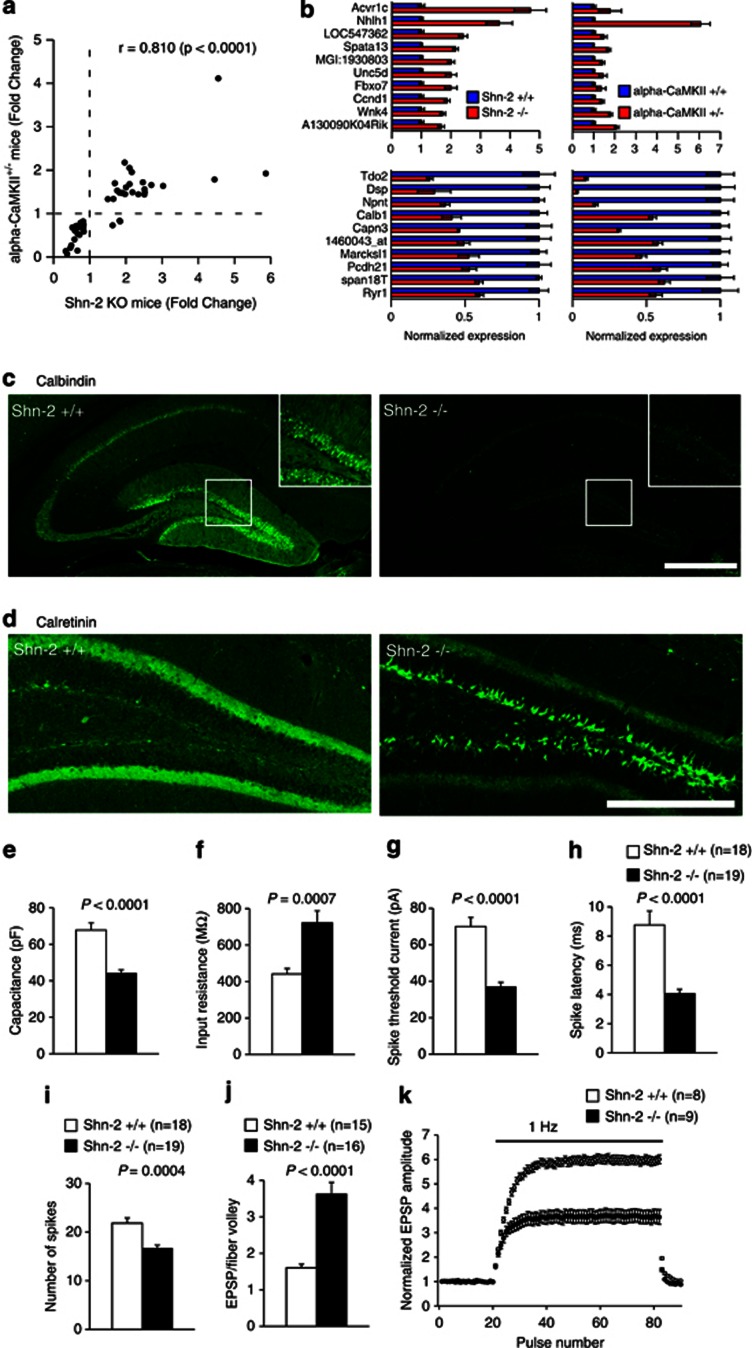Figure 6.
Dentate granule cells fail to mature in Shn-2 KO mice. (a) The hippocampal transcriptome pattern of Shn-2 KO mice was similar to that of α-CaMKII+/− mice, which also demonstrated maturation failure in the DG. Genes showing differential expression between genotypes at P<0.005 in both experiments were plotted. (b) Normalized gene expression of differentially expressed genes in Shn-2 KO and α-CaMKII+/− mice. The top 10 genes are indicated in the graphs. (c) The number of cells expressing the mature neuronal marker calbindin was decreased in Shn-2 KO mice. (d) The expression of the immature-neuronal marker calretinin was markedly increased. (e–k) Physiological properties of granule cells in the DG of Shn-2 KO mice and controls. Physiological features of DG neurons in the mutants were strikingly similar to those of immature DG neurons in normal rodents. Cell capacitance was small in the granule cells of Shn-2 KO mice (e, P<0.0001), whereas input resistance was high (f, P=0.0007), and the threshold current to induce spikes was low (g, P<0.0001). In the current injection (320 pA) experiments, the latency-to-burst spike was shorter (h, P<0.0001) and the number of spikes was lower (i, P=0.0004) compared with that in wild-type mice. (j) The efficacy of basal transmission at the MF synapse was increased in mutant mice (P<0.0001). The ratio of the peak EPSP amplitude to fiber volley amplitude is shown. (k) Shn-2 KO mice display greatly reduced frequency facilitation at 1 Hz (k, genotype effect: P<0.0001 at steady level). Scale bars indicate 500 μm (a), 250 μm (d).

